While the proposed development of 178 affordable apartments to rise up to six stories in height across the half-block-plus parking lot parcel at 88 Broadway, a development which the Telegraph Hill Dwellers (THD) have been seeking to have “right-sized,” has yet to be approved, a formal appeal of the Planning Department’s determination that the project would not have a significant effect on the environment has been filed.
From the appellant who lives seven tenths of a mile away from the Northern Waterfront development on Nobles Alley and is seeking a waiver of the required $597.00 fee for the appeal which was received by the city on November 27, the deadline for appealing the aforementioned determination:
“I believe that the loss of 180 Parking spaces and cumulative impact of the loss of parking and its effect on Traffic due to the future development of Seawall Lot 323 and 324 for the Teatro Zinzanni and Hotel Development and the Museum use at 940 Battery St was not adequately addressed and will result in a significant impact that cannot be mitigated and therefore would require a full Environmental Impact Report.
In the Department’s own analysis the project would generate 360 net new person-trips and that analysis completely ignores cumulative impacts of nearby developments which is required under [the California Environmental Quality Act].
The department also uses the elimination of parking to justify its traffic analysis. In so doing, the department ignores the impact on parking availability as a result of the project. This impact will generate more traffic as parking becomes more scarce, and this will result in a significant increase in Vehicle Miles Traveled (VMT).”
Identified by the Port of San Francisco as “the greatest affordable housing development opportunity among the Port’s seawall lots in the northeastern waterfront,” but having faced neighborhood pushback over just how affordable the development should be, the development of 88 Broadway as proposed would yield 125 apartments for families earning 50%-120% of the Area Median Income (AMI) and 53 units for seniors earning 40%-70% of the AMI, along with 11,400 square feet of retail/commercial space (including a 55-slot mixed-income childcare center to be operated by the YMCA of San Francisco).
And if the City’s environmental determination for the project as proposed was to be overturned, and a full Environmental Impact Report (EIR) was required, it could add a year (or two) to the development’s timeline, even with the streamlined approval process for affordable housing projects in place.
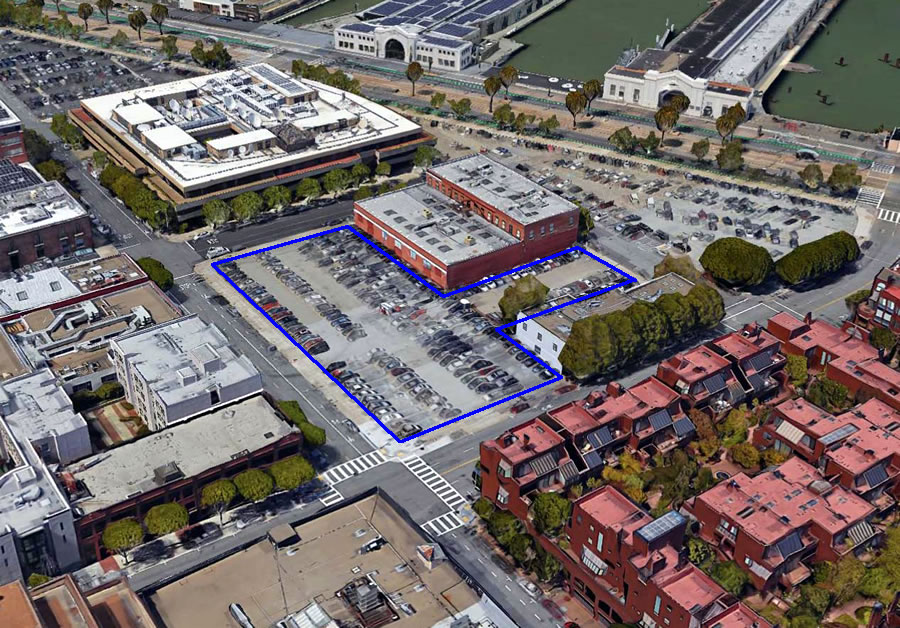
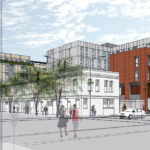
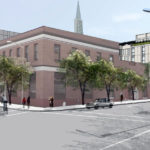
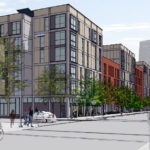
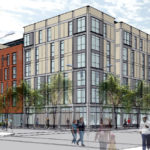
Once again the system we have is manipulated by the landed gentry. How disgraceful this will be if the development doesn’t go ahead.
Or, alternately, why should people be able to pay only a fraction of market rates to live in a highly desirable area?
And if your answer is “to keep SF ‘diverse'”, then maybe city gov shouldn’t do things – like giving tax breaks to Twitter – that allow for a flood of techies into the city…excuse me “City”, with the amount of “affordable” housing added – and it’s a fairly laughably generous definition of “affordable” – being little more than a token.
More self-serving equivocation from someone who already got theirs. Subsidized housing is both unfair and there isn’t enough of it! The problem isn’t just expensive affordable housing, or tech jobs with high salaries, but both!
Old homeowners who benefit from artificially constrained supply will say anything to keep their unearned gains.
even if one is not opposed to the gov’t providing affordable housing, it is absurd to do it on the most (or near the most) valuable and desireable parcels that exist.
Agreed
That’s right, civ-e. Let the poor live on land nobody else wants.
what a terrible Tumpian thing to say. let them eat cake
That’s right, I see. No one wants to live anywhere but the most desirable land in the city. The rest of the city and the bay at large is a dump.
That is not at issue in the appeal–the issue is allegedly about traffic, which we all know is BS. San Francisco has an inclusionary housing policy and a policy for subsidizing affordable housing–it is what it is, and the way to address policy would be either through a ballot measure or lobbying the Board of Supervisors to change the law.
Also, most of the people in SF, as in the vast, vast, vast majority do not work in the tech industry, at least as how it is defined. San Francisco was unaffordable to most people in the U.S. long before the tech industry even came to town the first time in the 1990’s. And, whatever you think about the Twitter tax break, it covers narrow part of the city, and most of those workers actually live in the Mid-Market area or nearby. They are not living out by Telegraph Hill.
So, let’s get back to the issue, which is traffic. This is a BS appeal, and it is wasting time and money. It is simply reflective of the fact the mainly white and mainly affluent residents of Telegraph Hill who have a long history of fighting development (going back at least to the 1950’s) don’t like the idea of any sort of affordable housing near them. Too bad for them.
If the THD comes out against it, I would wager that it never gets built.
The appellant resides on Nobles Alley. Ironic, no?
Brilliant!
THD (the most powerful neighborhood association in the city) is just notorious for supporting nothing but themselves!
multi-millionaire conservatives in liberals clothing. true wolves to the SF commoner
Mmmmm, taste that pure high grade NIMBY!
Yep. I’d say I was speechless at the shameless nimbyism – but this neighborhood has lived and breathed is so long its part and parcel.
A scorpion asks a frog to carry it across a river. The frog hesitates, afraid of being stung, but the scorpion argues that if it did so, they would both drown. Considering this, the frog agrees, but midway across the river the scorpion does indeed sting the frog, dooming them both. When the frog asks the scorpion why, the scorpion replies that it was in its nature to do so…..
It’s not necessary to impugn motives of the Telegraph Hill Dwellers and their allies to make a case for this project. They’re correct in claiming that this development will have an impact. They’re incorrect in concluding a priori that the net impact is negative.
San Francisco urgently needs more housing, especially affordable housing. The value derived from converting a parking lot to nearly 200 affordable apartments in a solid if not exquisitely designed low-rise development far outweighs any objection they may raise, however objectively legitimate. I say this as one who lives in a low-rise neighborhood – Alamo Square/Divisadero/NOPA – in which hundreds of new housing units are in the wings.
Two words: Build it. Plus one acronym: ASAP.
So public policy should not weigh the trade offs between housing a few hundred or a few thousand new residents on one hand, and increasing gridlock that delays hundreds of thousands of existing residents and workers, including to transit, delay and overcrowding of which CEQA specifically calls out as an environmental impact, by measurable amounts of time per day?
And how will these 178 units increase gridlock that delays hundreds of thousands of people?
Do I need to spell it out to you?
C-U-M-U-L-A-T-I-V-E I-M-P-A-C-T-S.
Back to SFRealist question, how did this create gridlock for thousands of people again? Even better, how does 53 of the 178 proposed apartments for seniors create gridlock?
CEQA is one of many reasons that California has unaffordable housing in the first place.
Otherwise spelled: P-R-I-V-I-L-E-G-E
Apparently the nobles in SF think they have the right the use public resources like the road free of peasants in their way.
Unfortunately for them , a new generation is coming up that does not buy into the old arguments of “we have ours – screw the next generation”.
More like spelled B.S. Again, any development will have some impacts. There is no legal requirement that a development have zero impact. Thankfully, the Assembly passed pro-housing legislation that will make it much harder for cities to deny otherwise quality developments starting the beginning of next year.
The California Environmental Quality Act requires that cumulative impacts from multiple projects over time be considered by policy makers. In North Beach, there was not even any pretense of trying to consider cumulative impacts on a part of the City already the most built out.
In the Eastern Neighborhoods, they went through the motions of trying to do a cumulative impacts analysis, but punted and basically said “f*ck it,” and asked the Supervisors to pass a statement overriding the significance of transit delays throughout the Mission.
It is not all about you housing boosters and YIMBYs desire to maximize complex urban systems on your favored variable–housing. There are many other urban systems that must be considered in comprehensive planning. CEQA offers a cudgel to encourage policymakers to consider those cumulative impacts even if they are bought and sold by developers, their boosters, consultants, attorneys and architects.
“a part of the City already the most built out”
This is a parking lot a block from the Embarcadero that’s surrounded by low rise buildings. This is a small-medium sized project in an area that is not built out.
(Or we could be ploughing over more of Mt. Diablo and putting people there. I wonder what the environmental effect of that would be.)
“the most built out” is in comparison to other parts of the City. Your sophistry is irrelevant.
Are you seriously trying to suggest that North Beach is not one of the most built out parts of the City?
“Mt. Diablo” The boosters managed to sue Pleasanton several years back to blow away the urban growth boundary under the theory of providing more affordable housing in the town center. Your concerns for sprawl except mansions and estates, none of which compete with affordable housing.
If you want to add population, then identify funding for and program commensurate infrastructure improvements and you will have no risk of getting caught up in CEQA cumulative analysis challenges.
North Beach is relatively built out. I wouldn’t call this location in North Beach.
Are you seriously trying to suggest that this location, a parking lot surrounded by low rise buildings one block from the Embarcadero is one of the most built out locations in San Francisco?
Any new housing would increase gridlock. Is your argument that no new housing should be built. The law does not require that a development have zero impact. It states that if there are significant impacts, which is highly debatable in the case of this one development, then there needs to be mitigating steps taken to address them.
When you just snapshot one project you pretend cumulative impacts don’t exist and you anger the deities of CEQA and rightly so.
It’s the job of state and local government to address cumulative impacts – not the duty of one project.
By trying to pass off their duty – they have created one of the most economicaly unequal jurisdictions in the country.
More like you get people to lobby the General Assembly and the pass laws making it harder for both cities and appellants to challenge these projects. It’s almost Jan 1, 2018–tick-tock. And, if the is obstructionism continues, then there will be a fresh new batch of legislation further reducing local control and neighborhood input over local developments.
seriously , hundreds of thousands delayed over a minor addition of housing to an area that is mostly walkable and well served by public transit. You should be ashamed. just come out and say you do not like poor or lower middle class people living near you
All the yimby hogwash is a thinly veiled and well financed but poor of taste lie. In America, the USA, most pivotal legal cases argued before the Supreme Court for just one example have ONE PLANTIFF. No doubt Rosa Parks was just a nimby for public transit real estate?
Hunter S. Thompson called. He wants his mescaline back. 🙂
Between 1970 and now half the black population of San Francisco has been forced out. We have gone from having 96,000 black citizens in 1970 to less than 42,000 now. 50 years of steady decline. By 2030 the only black people left in the City will either own their own homes or be homeless. The numbers show, none of this affordable rental housing does anything to improve our poor civil rights record.
The actual meaning of the words ‘forced out’ clear escape you. You have no sense of history, of what forcing people out of their homes really mean. My grand parents are Amenians that fled the Genocide, my dad fought in WWII. There was some actual forcing out back then. It’s very different from being priced out of – or deciding to leave – an area.
You remind me of the CDC dictating the use of words for ideological reasons.
It’s somewhere in between (and of course one of the main reasons the Western Addition became “negroe” in the first place is because it ceased to be Japanese after they were, yes, “forced out”).
I don’t think Genocide – or war displacement, more generally – should be the only circumstance that allows for the term.
Now back to the actual topic: whether the Applicant is (just) a selfish jerk, or if, in fact, the Appeal has some merit.
No I mean “forced out”. As in the the government took houses from black homeowners by eminent domain, tore them down and sold the land to white people. Yep. It really happened in SF.
Willie Brown – our former mayor – can give a great talk on having lived it personally.
Except in this case, Telegraph Hill Dwellers are “Da Man”
Well, the Teatro Zinzanni was evicted to make room for a parking lot, so why not build over another parking lot to make room for it?
I think at the very least anyone who appeals ought to pay the filing fee for said appeal.
Would anyone expect the Peskins and their gang (the THD), to behave any differently? All this will do is get Sonja Kraus elected.
You beat me to it. Aaron Peskin = THD.
And the gall to ask that the filing fee of 597.00 be waived. If you want to stick a wrench in it then pay the price.
Cumulative impacts analysis, as in trying to figure out whether multiple discretionary public policy decisions might over-tax infrastructure?
(boosters put hands over ears and eyes) This is not happening, this is not happening, this is not happening!
Let’s face the question then:
No. This will not overtax infrastructure. It’s 178 units of affordable housing creating 360 new person trips (in their weird lingo). If you give an 18 hour day, that’s 20 people per hour, most of them walking, of one person on a sidewalk every 3 minutes. I think the sidewalk can handle that increased use.
There’s no content to any of this, the purpose is to delay and increase costs so that the developer will give up or come to some agreement with the NIMBYs to scale back the project.
We should require a $50 deposit per day per unit delay, so if you’re trying to delay a 200 unit proposal, you need to put $10,000 into an escrow account every day. If your motion loses or you stop putting in the money, those funds are turned over, 50% to the developer and 50% to city government and development immediately proceeds.
Now that’s a good idea.
Thank you. The idea that 178 households will be denied housing for each day of delay is of no concern to THD, but it should count for something in the law.
Also, it’s a little unfair that one side can asymmetrically impose costs on the other side without bearing any costs themselves. Let’s equalize the costs to both sides when development is halted like this.
Hey just dump it in SOMA…the place where all land uses that are rejected in other Districts are placed. I’m sure Peskin will approve that approach.
Just build it. We need housing. Parking lots on the waterfront are a travesty. It’s always about the parking.
The proposal is a shameful use of incredible land. A far smarter move would be to build incredibly expensive market rate condominiums, then use the net proceeds to build (in a different location) many times the number of affordible units as would be built here.
they tried building market rate condos near by at 8 Washington, and THD argues that more upscale condos are not needed in our low income housing crisis. they don’t want anything built at all.
UPDATE: The public hearing for the appeal has been slated for February 22, 2018.
Nobody from this site will be parking anywhere near Nobles Alley, the streets don’t even go through! That part of North Beach has no practical connection to the Embarcadero parking lots.
I used to park in this lot for years. Now I ride my bike for health and convenience reasons. I seen an increase in riders by 10x in the last 10 years. I have never seen this lot full and ride by it twice a day. My gut is most people living here would rather walk/ride/lyft to thier jobs vs. drive. The world is changing and the car use is shrinking. I say increase the unit count and decrease the parking ratio. My gut is it will still lease 100% on day one of opening.
agree with you, except on car use. Car use has been steadily climbing in SF.
Yep. Car use is correlated with income. More income – more cars. I think the DMV #s show a 50% increase in cars registered in SF over the past 30 years. Mostly in higher income neighborhoods….
It surely doesn’t make sense to delay the project due to the complaints of a person not affected by it. On the other hand, why would one build affordable housing in this location if you could sell it and build even more units in another location?
Living a block from the proposed site, i suppose i should wade into the morass of comments with an observation or two.
First, let’s not turn this into a class warfare issue. There is no “landed gentry” and, yes, people are being pushed out of ours and many other cities. This is a global issue that will not be solved with one building site. We can lament the unfairness, but it is irrelevant in deciding on whether there should be a development on this spot. Why not focus on finding consensus? I suppose agreement is less fun than argument.
But putting aside petty BS on both “sides”, i have yet to hear anyone say that the waterfront area and Jackson Square in general is anything but one of the most iconic and beautiful parts of our city.
We are one of the great cities of the world and yet we have no real architectural marvels to add to the culture of the city. (That is unless you count the glass tower of the Salesforce building. Which i don’t.) Make it affordable housing. I don’t care. But make it an AMAZING building. A jewel. Something beautiful that will bring joy to everyone in the city. Doing so would of course be expensive and, no doubt, controversial. But i think it would energize the community around a principal of civic pride- a concept that seems to be looked at as quaint for some reason.
Imagine what we could create if we started thinking big. Let’s start there.
UPDATE: Timing for Contentious Development at the Base of Telegraph Hill
UPDATE: Planning Recommends Rejection of Affordable Housing Appeal